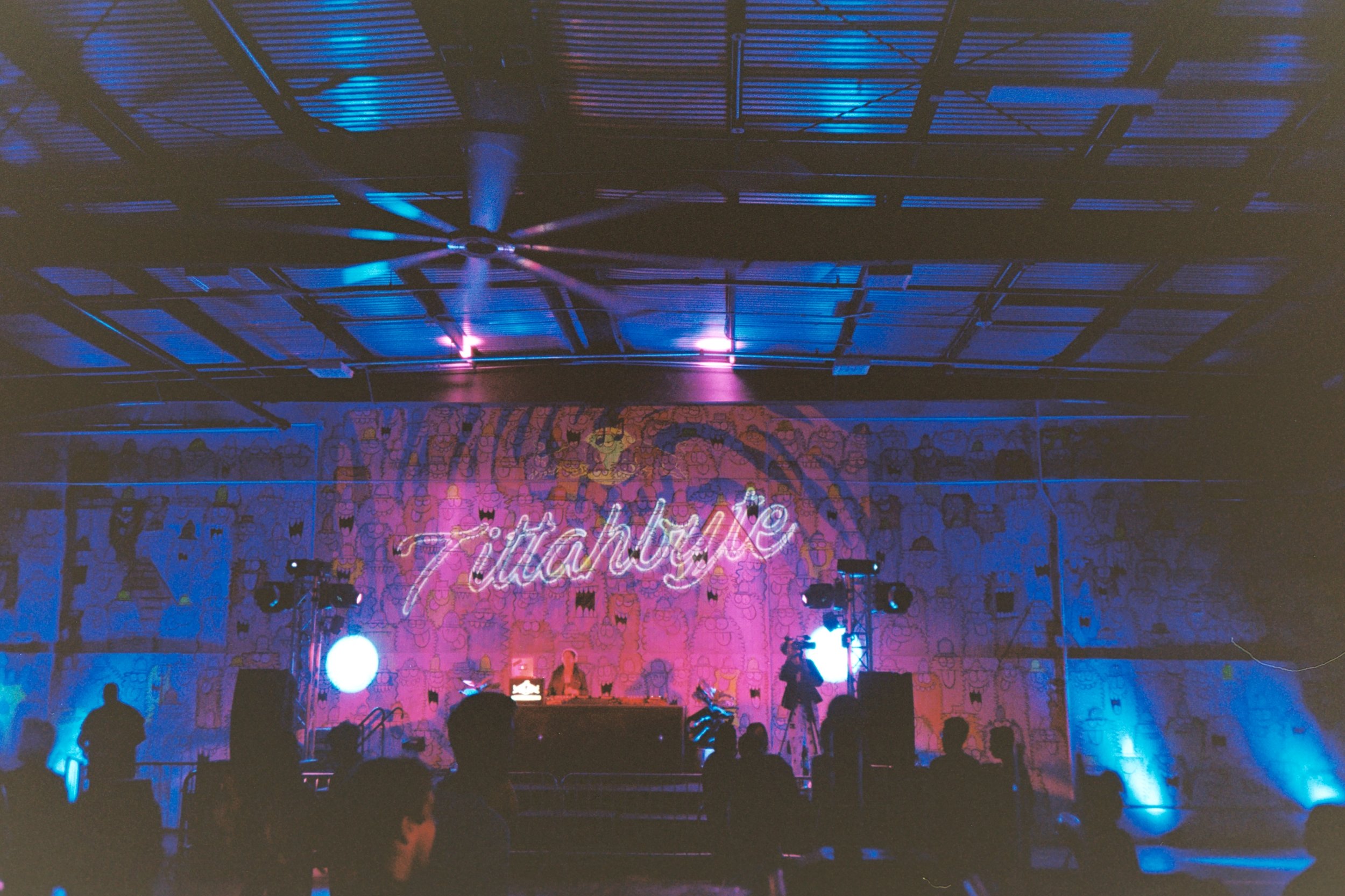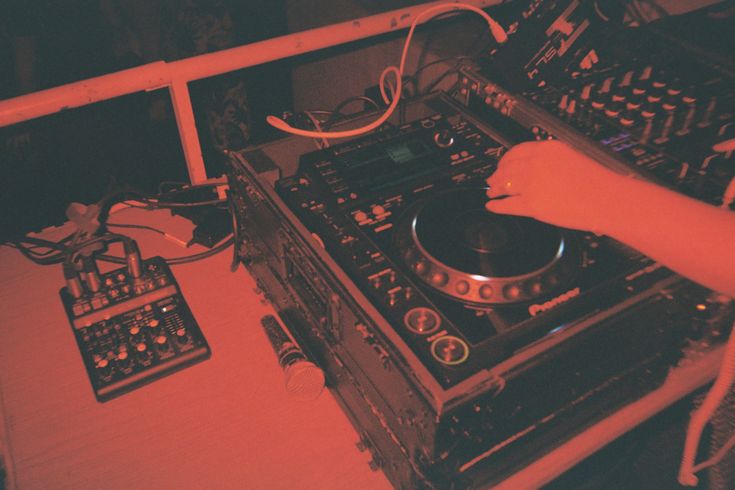LIFE OF A PART-TIME DJ
the life and times of a Honolulu disc jockey
Words by Eunica Escalante // Photos by Lancifer, Naz Kawakami, Jarrett Lapitan and Courtesy of Riana Stellburg
It’s the Monday after First Friday. And most Chinatown regulars were still mentally emerging from their weekend ragers, shuffling around town bleary-eyed and barely having come down from their bar-hopping bacchanalia.
So, when Riana Stellburg arrives, as usual, punctual to the second, she’s understandably weary. But it wasn’t because she was attending the parties. No, she was the one throwing them. This takes more coordination than you might think because her parties aren’t just kickbacks with some coolers of Tecate and a charcuterie board thrown in for class.
“My mom used to tell me, ‘If you can’t do it right, then don’t do it at all,’” she says. “And I come from a family of immigrants—I’m first generation—so you know hard work is in my blood.”
Take this weekend for example. It was a marathon of gigs with three shows at two different venues within three days.
One of these shows was a packed concert headlined by SOSUPERSAM, an artist that Stellburg flew down from Los Angeles to perform at the Republik. The event took months of planning with Stellburg coordinating back and forth with artists, talent managers, and venues.
The two other gigs were at The Laylow where Stellburg holds a post as their resident DJ, creating custom mixes for guests lounging at the Hideout.
For some, a weekend like that would have necessitated a whole week of recovery. But on Monday, Stellburg was up at 6 a.m., despite performing past midnight the night before.
She’s used to the hustle.
Better known in the scene as Tittahbyte (a moniker borne from a bungling of the unit of measurement, a terabyte), Stellburg first found acclaim as a music journalist.
At 18-years-old, she gained notoriety as one of the few female photographers in Honolulu’s punk scene. She would go on to freelance for The Honolulu-Star Advertiser and be the resident photographer for the Manifest.
But it wasn’t until Stellburg began dating a DJ that she even gave a thought of becoming one.
“I was so used to writing about artists,” she says. “I never really thought I would be an artist.”
Robin Taclas aka DJ Revise, a renowned artist in his own right, pointed out Stellburg’s expansive music knowledge, cultivated from her years as a music journalist, but also from growing up with three brothers who all had different musical interests. As Stellburg puts it, each brother had his own style, and she, as the baby sister, became a melting pot of oldies tunes, hip-hop hits, and punk jams.
So, she began experimenting with mixes, painstakingly combing her music archives to curate playlists. But for months the tracks sat in her hard drive, with Stellburg barring anyone, other than Taclas, to hear them.
The mixes were so deeply personal, like audible manifestations of her soul, that sharing them with others left her feeling vulnerable. And she is, as she puts it, “a life-long perfectionist” so the tracks seemed to always need tweaking: a better fade here, slowing down the tempo there.
“I’ve been in this business since I was 18-year-old and it’s been about constantly hustling,”
For the better portion of a year, she remained a bedroom DJ—seven months of staying at home making mixes. Finally, Taclas pushed her to take a gig.
“It was just a hip-hop show, super underground. Nobody gave two shits that I was there,” she says. “But, of course for me, I was so paranoid about it because it was my first show.”
At first, she was too focused on having everything work out perfectly. “I felt like I had imposter syndrome, like I didn’t even know how the fuck to DJ,” she says. But soon the crowd began grooving to her tracks, a seamless blend of throwbacks and underground artists.
The instant gratification of performing in front of a live audience was a high she couldn’t shake. Soon after, she caught the eye (or rather the ear) of the Chinatown scene. Gigs after gigs came through. Once just a bedroom DJ, today she’s risen to be one of Honolulu’s premier jockeys. And in the years since, she has become a staple in almost all aspects of the arts and culture landscape.
“Honestly, I do too much shit,” she jokes. But a quick perusal over her LinkedIn profile shows a resume that stretches on as long as a CVS receipt.
Other than DJing, she’s the co-founder and brand director for About The Goods, a lifestyle brand her and Taclas opened in 2012. It is at once a clothing line and an event promoter. Their brick-and-mortar store featured apparel with bold designs infused with their love for local culture. First Fridays gave them the chance to explore their interests beyond music, offering their space up as a platform for local artists exhibitions.
In 2016, she became the assistant talent buyer for BAMP, bringing down shows such as Tokimonsta, Kehlani, and Chance the Rapper. Of course, she has never stopped writing. She’s been a contributor for Contrast since 2010.
When asked how she handles it all, she pauses, stares me straight in the eyes, and says, “I don’t.” In the past few years, she confesses, she has felt the burn-out of juggling so many personas.
Earlier this year, while driving back home to the west side after another late night show, she had an epiphany. As glamorous as her life might seem, bouncing from creative gig to creative gig, she wanted out of it. She shuttered About The Goods’ Bethel Street location, slowed down on the DJing gigs, and did something she never thought she would do: apply for nursing school.
“I’ve been in this business since I was 18-year-old and it’s been about constantly hustling,” she says. “There was never any time to just chill. And I don’t want to glorify that. It’s okay to just do one thing at a time. That’s something I’m still learning myself.”
Mostly, she craved the stability that a regular job had. Now, she’s back at school and works as a nursing aide at Kuakini Medical Center.
Even now, she finds it hard to completely leave the scene behind. Cutting back on the DJing still means at least one show a week, and she’s constantly organizing and promoting shows for BAMP.
“They’ve been part of my lifescript for so long. It’s part of who I am,” she says. “I don’t think I can completely leave that life behind.”



